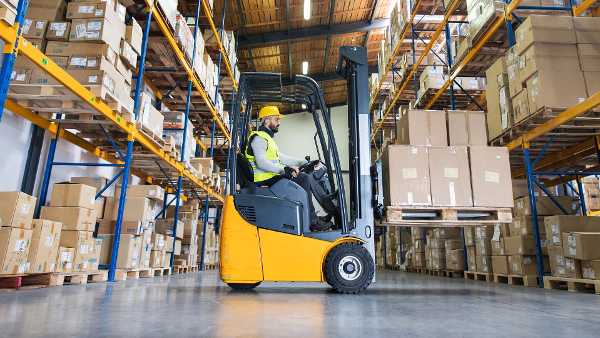What requirements does my import product have to meet?

- Marcel Hoebink
- Edited 29 August 2025
- 7 min
- Managing and growing
- International
Product requirements ensure that products are safe for consumers. There are European and national product requirements you must meet as an importer. In this article, you can read where to look for product requirements. And which product requirements are common. For example, CE marking for consumer electronics and food safety requirements for food products.
Products that you put on the market in the Netherlands must meet European product requirements. These are rules for safety, health and the environment. Make sure you know what the requirements are for the products you import. You can look up the relevant product requirements in Access2Markets.
Finding product requirements
To find information on the requirements for your products, use the European Commission’s tool. The video below explains how to search for product requirements and other information using the tool. Are you importing from a country outside the EU? Then you will find the product requirements under ‘import regulations - specific’. Are you importing the product into the Netherlands from another EU country? Then go directly to the section ‘Product requirements’.
Product regulations are often complex. Several European and/or national requirements may apply to your product. Rules may also change. Engage a product compliance agency so that you have a complete picture of all requirements. Product compliance agencies specialise in product safety and testing and can advise you. You can find these consultancies, for instance, in Google with keywords like: ‘product compliance Netherlands food’ for food. Enter ‘product compliance Netherlands non-food’ for other products. Inform suppliers in advance about the applicable product requirements and ask if they have proof they meet these requirements.
Product requirements apply within EEA and Northern Ireland
European product requirements apply throughout the European Economic Area (EEA). The EEA consists of the EU countries and Norway, Iceland and Liechtenstein. Product requirements in these three countries are equal or equivalent to EU product requirements.
The EU product requirements also apply to products from Northern Ireland.
Alle regels bij import weten? Gebruik Access2Markets
Product safety
Product requirements are there to ensure products are safe for users. The General Safety Product Safety , GPSR is a European regulation (EU) 2023/988 for general product . The GPSR applies to all non-food consumer products that are brought into the European market. The GPSR does not cover medicines, animal feed, live plants and animals, animal by-products, plant protection products, antiques, and food. Nor does the GPSR apply to products clearly marked as requiring repair or overhaul before use.
Obligations
As an importer of non-food products, you are responsible for product Exactly what you are responsible for depends on your role.
- Do you import products from outside the EU or Northern Ireland? Then you have the role of importer.
- Do you import products from an EU country or Northern Ireland? Then you have the role of distributor.
- Do you alter an imported product or put your own logo on it? Then you have the role of manufacturer.
The GPSR deals with general product safety. In addition, for some product groups there are European directives and regulations with special requirements. This applies, for example, to chemical products, toys, cosmetics, and technical products. Annex I of Regulation (EU) 2019/1020 lists these directives and regulations and the corresponding product groups. These include products that require CE marking. For the products in Annex I, the GPSR applies only to components and risks that are not, or less extensively, regulated in the corresponding directives and regulations.
National legislation
Most European legislation is laid down in directives. EU member states turn these into national laws and legislation. In the Netherlands for instance, the Commodities and various Commodities Act Decrees contain rules that consumer products in the Netherlands must comply with. Such as the rule that the mandatory label information on pre-packaged must be provided in Dutch. Or the requirements for cribs and playpens regarding the height of the side walls and the distance between the bars.
GPSR: new rules for product safety
There are too many unsafe products on the market. The General Product Safety Regulation GPSR sets stricter requirements for product safety in the EEA. Read what you must do as an .
Other sources for product requirements
As well as Access2Markets, you can also find information on several product requirements on the EU website Your . You can also visit the website of the Centre for the Promotion of Imports from Developing Countries . Or read these articles on importing:
There are different requirements for products. Common product requirements include CE marking requirements for technical products. But also health requirements for food products, and REACH and CLP requirements for chemicals.
Safe import products: 'Accidents will happen'
CE Marking
Many technical products and various consumer products sold in the EEA are required to bear CE . CE Marking indicates that a product meets certain minimum safety, health, and environmental requirements. The requirements can be found in the CE . The CE directives apply to several product groups, including machines, toys, medical devices, and electrical/electronic equipment.
In some cases, product groups have to comply with several directives. For high-risk products, the manufacturer must have the product inspected by an independent notified .
Report unsafe products to the Productenmeldwijzer
Do you need to report a product that does not comply with the rules for safety, health, or environment? The Productenmeldwijzer (in Dutch) helps you find the right inspecting organisation.
Health requirements
If you import foodstuffs, you must comply with European food safety requirements. This is necessary because foodstuffs can contain substances that are harmful to human health. Food must be traceable through the entire chain of production, processing, and distribution. This ensures unsafe foodstuffs can be quickly removed from the market.
Additional requirements apply to certain foodstuffs. When importing animals or animal , you often have to meet veterinary health requirements. You will also have to comply with health requirements when importing certain plants, vegetables, fruits, and plant .
REACH and CLP
REACH (Registration, Evaluation, Authorisation and Restriction of Chemicals) is a European regulation on the production of and trade in chemicals. When importing products such as chemicals, cans of paint, tubes of glue, clothing, batteries, car parts, or office supplies, you will have to deal with .
Chemicals are often added to REACH. For example, on 19 September 2024, the European Commission decided to restrict the use of PFHxA (Perfluorohexanoic acid) and similar PFAS chemicals. PFAS (per- and polyfluoroalkyl substances) are harmful substances that barely break down and can build up in the human body. From 2026, PFHxA and similar PFAS chemicals will be phased out or restricted in products such as clothing, cosmetics, and packaging. There are exceptions for semiconductors and batteries, where PFHxA is still needed for the time being. More information can be found in the European Commission's press .
You will also have to comply with provisions of the European Regulation in addition to REACH. CLP stands for Classification, Labelling and Packaging. This is a European regulation that deals with the classification and labelling of chemicals.
Requirements for labels
Labels are part of the product requirements. There are rules for what you must state on labels. For example, the composition of a product, contact details of importers or manufacturers and how you use the product. The NVWA checks if the labels are correct. Each product group has its own rules:
- Labelling of non-food
- Food
- Animal feed labelling (in Dutch)
EPR: Extended Producer Responsibility
Does EPR apply to your product? Then you are also responsible for your product when it is discarded or at the end of its product life. You will face additional costs and rules, for example for collection and recycling. There are EPRs for textiles, disposable plastic, packaging, tires and cars, batteries and accumulators, and electrical and electronic equipment.
Product liability
European directive (EU) 2024/2853 for product protects consumers from damage caused by defective products. Consumers can hold importers liable for damages. This includes personal injury and property damage. Personal damage is damage caused by death or bodily injury. Property damage is damage to another consumer's product caused by the defective product. You can take out insurance against product liability . Discuss your options with an insurer.
In the cases listed below, the importer is liable for damages.
- If you import products from an EEA country or Northern Ireland, product liability lies with the manufacturer who produced the product within the EEA or Northern Ireland.
If the product was not manufactured in the EEA or Northern Ireland, the authorised of the manufacturer in the EEA or Northern Ireland bears product liability. Or the importer who brought the product into the EEA or Northern Ireland. - Do you import products from outside the EEA or Northern Ireland? You as can be held liable for damages caused by a faulty product. Or the authorised representative of the manufacturer in the EEA or Northern Ireland.
- If you sell products you have imported under your own brand name, you present yourself as the . You bear product liability for the damage caused by a defect in the product. It makes no difference where you imported the products from.
Be aware of exclusions or limitations of liability in the terms and conditions or the contract with your supplier. Always try to avoid this.
Fulfilment centre liability
The directive on product liability ensures that there is always a party in the EEA or Northern Ireland who can be held liable. For example, when consumers order the product directly from a manufacturer outside the EEA or Northern Ireland. And there is no importer or agent of that product within the EEA or Northern Ireland. In that case, the consumer can hold the fulfilment centre liable. A fulfilment centre stores products and usually packages, addresses, and ships them.
Is the identity of the manufacturer, agent, importer, or fulfilment centre inside the EEA or Northern Ireland unknown? Then the consumer can hold the distributor of the product in the EEA or Northern Ireland liable. Within the directive, a distributor is any other business in the supply chain that sells the product.


